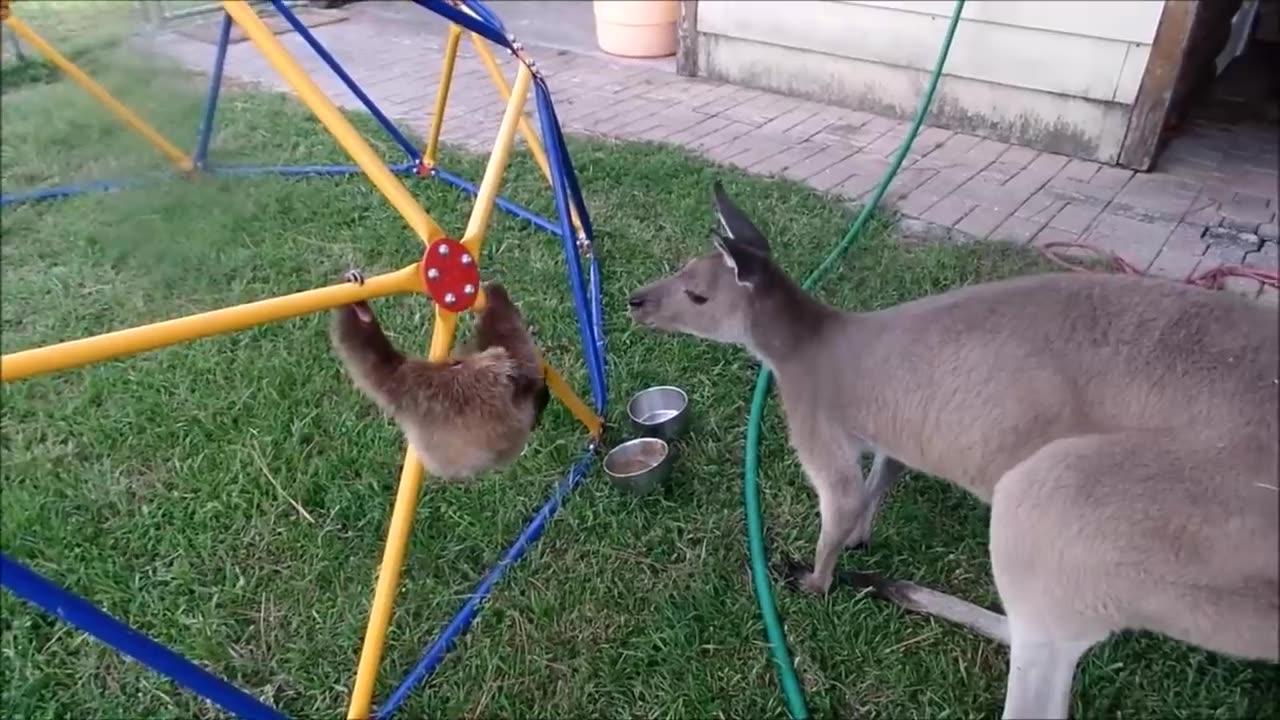Premium Only Content

Baby Sloth being slow very funny
The sloth is a slow-moving mammal that belongs to the order Pilosa and the suborder Folivora. Sloths are known for their relaxed and unhurried lifestyle, spending most of their time hanging upside down from tree branches in the tropical rainforests of Central and South America.
Physical Appearance: Sloths have a unique appearance with long limbs and long, curved claws that they use for hanging onto branches. They have a stocky body with short ears and a short, stumpy tail. Sloths are covered in coarse fur that grows in the opposite direction compared to other mammals, providing them with protection from the rain.
Slow Movement: Sloths are famously slow-moving creatures and are considered one of the slowest mammals on Earth. Their sluggish nature is due to their low metabolic rate and specialized adaptations for an arboreal (tree-dwelling) lifestyle. They typically move at a speed of about 0.15-0.3 meters per minute.
Arboreal Lifestyle: Sloths are highly adapted to life in the treetops. They have long, curved claws that allow them to hang effortlessly from branches, even when they are sleeping. Their limbs are well-suited for suspension, but they are not well-adapted for walking on the ground.
Diet: Sloths are herbivores, primarily feeding on leaves, buds, and fruits. Their diet consists mainly of the leaves of trees such as cecropia, yucca, and guarumo. Sloths have a slow digestive system, and their specialized stomachs help them break down the tough plant material they consume.
Nocturnal and Solitary: Sloths are primarily nocturnal, being most active during the night. They spend around 15-20 hours per day sleeping or resting. Sloths are solitary animals, except during the mating season or when females are caring for their young.
Slow Reproduction: Sloths have a relatively low reproductive rate. Females usually give birth to a single offspring after a gestation period of about six months. The young sloth clings to its mother's belly and remains with her for several months, learning important skills before venturing out on its own.
Species Diversity: There are two main types of sloths: two-toed sloths (family Megalonychidae) and three-toed sloths (family Bradypodidae). Despite their names, both types of sloths actually have three toes on their hind limbs, but two-toed sloths have two fingers on their front limbs while three-toed sloths have three.
Sloths have gained popularity due to their docile and gentle nature. They play a vital role in the ecosystems they inhabit by dispersing seeds and serving as hosts for various organisms, such as algae and insects.
-
 20:54
20:54
Chris From The 740
16 hours ago $0.12 earnedThird Time’s the Charm? Amend2 Mod3 Glock Mag Put to the Test!
3.27K4 -
 13:23
13:23
T-SPLY
1 day agoStephen Miller BLOWS UP On CNN For Questioning Deportations
88.6K274 -
 16:09
16:09
Clownfish TV
1 day agoSnow White Can't Even Break $100 Million?!
116K74 -
 LIVE
LIVE
Grant Cardone
2 hours agoGrant Cardone's 10X Business Summit: Day 1
242 watching -
 1:09:37
1:09:37
IsaacButterfield
18 hours ago $29.50 earnedSteve Irwin's Son BREAKS THE INTERNET | TRANS Athletes Make A Come Back | The World Turns on TRUMP!
105K88 -
 2:02:36
2:02:36
Badlands Media
1 day agoThe Liberty Den Ep. 138: Rigged Machines, Rogue Rulings & the Maggot Margin
157K67 -
 58:55
58:55
Trumpet Daily
1 day ago $3.55 earnedTrump Gives Israel the Obama Treatment - Trumpet Daily | Apr. 11, 2025
15.4K9 -
 1:01:23
1:01:23
KevinHoytVT
11 days agoNOW HIRING: Citizen Journalists - Creating the NEW AP and beating Fake News
12.8K2 -
 34:54
34:54
The Dr. Ardis Show
3 days ago $5.76 earnedThe Dr. Ardis Show | Is Your Water Killing You? | Episode 04.09.2025
18.8K12 -
 1:14:36
1:14:36
The Heidi St. John Podcast
1 day agoLoving God Means Loving People
8.03K1